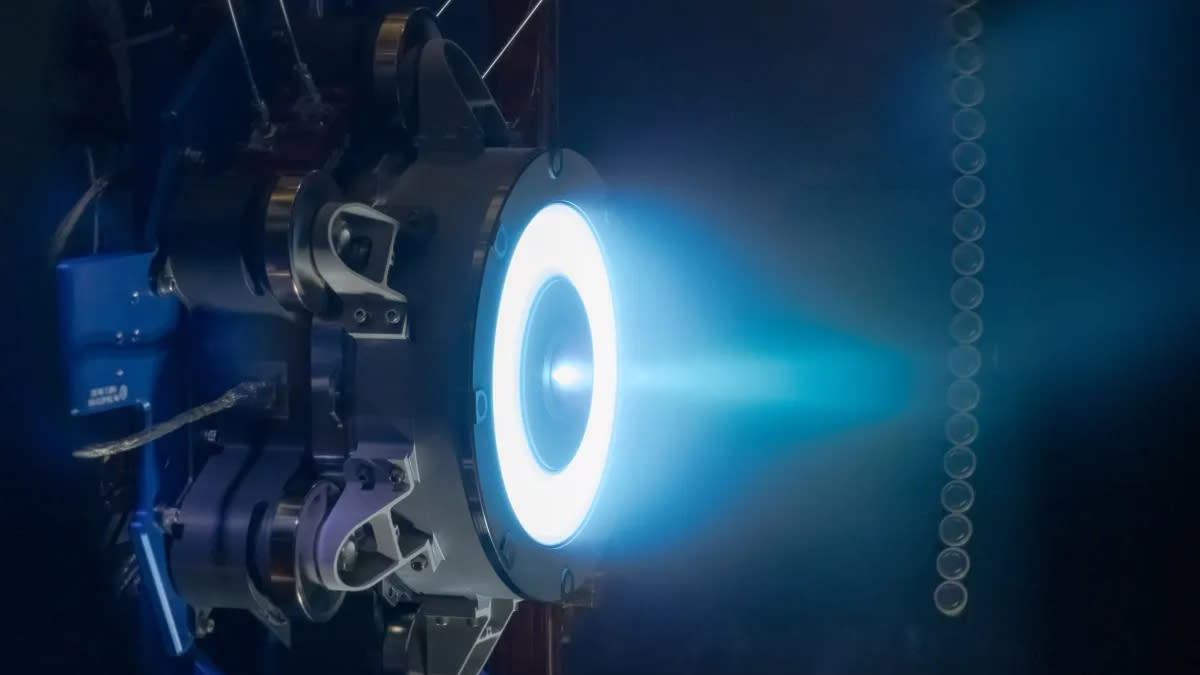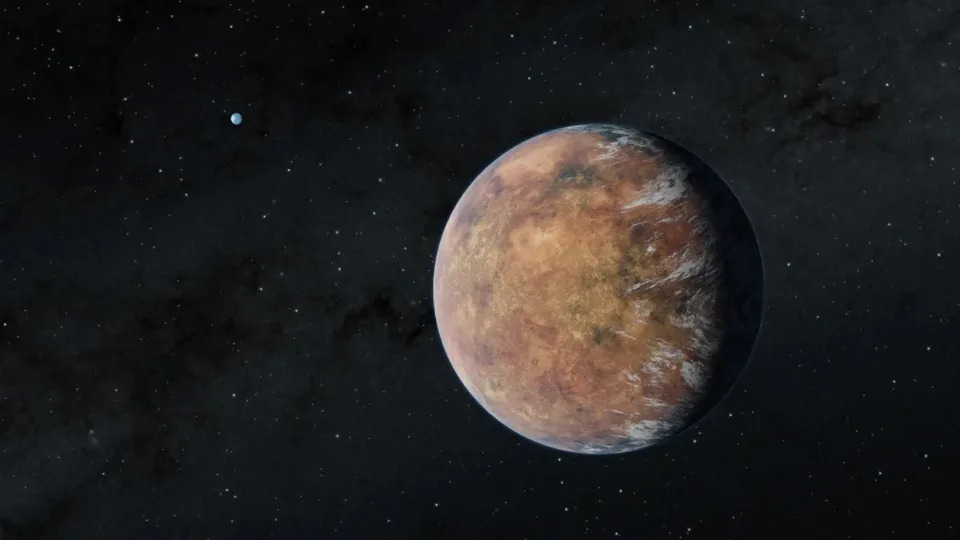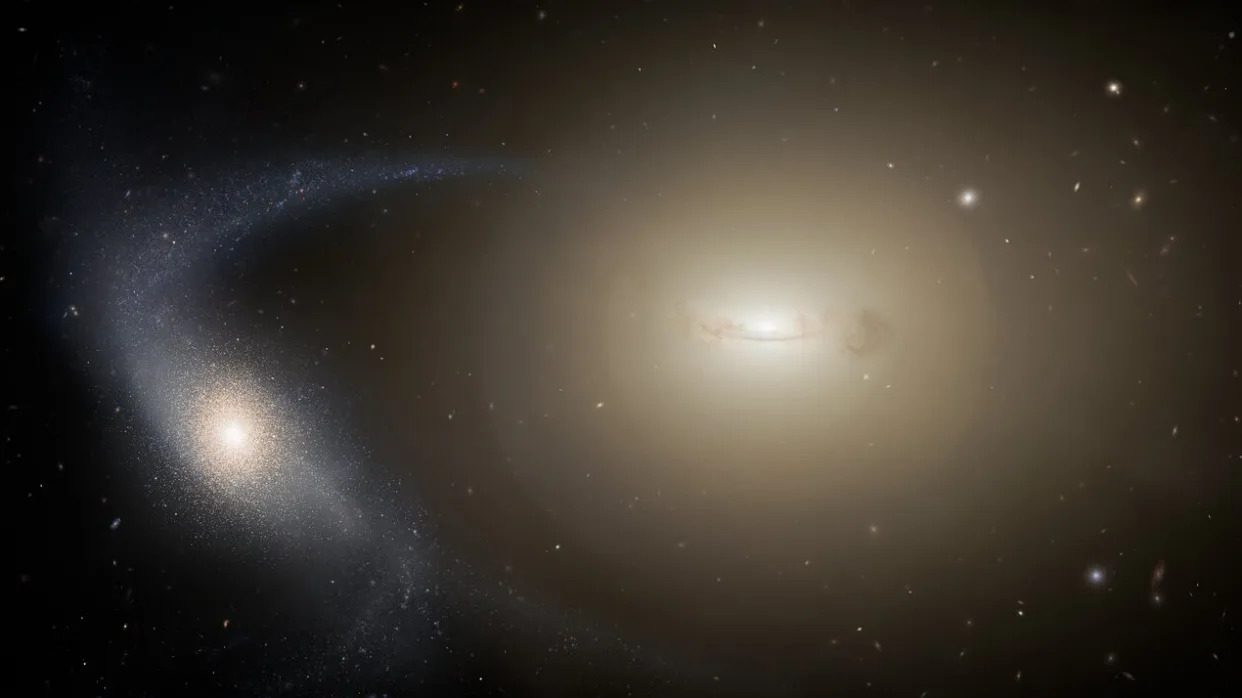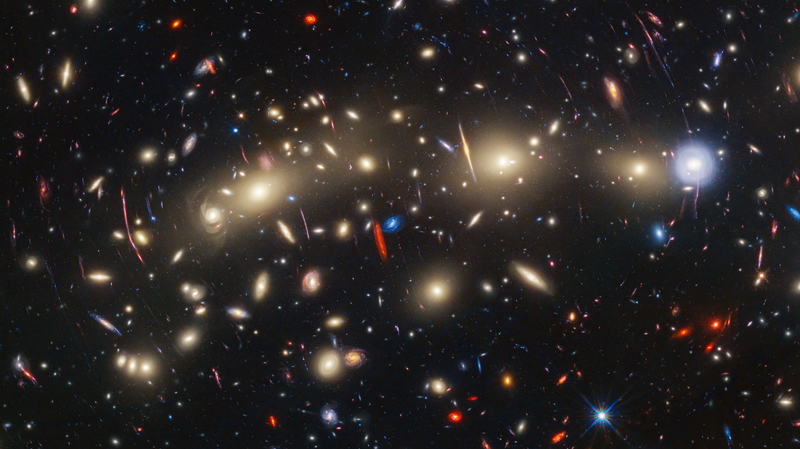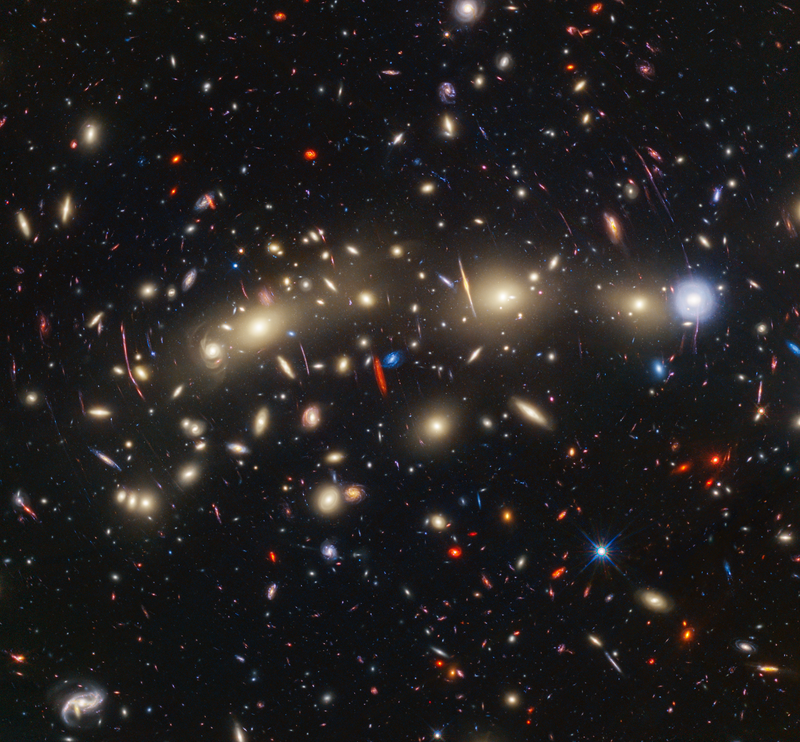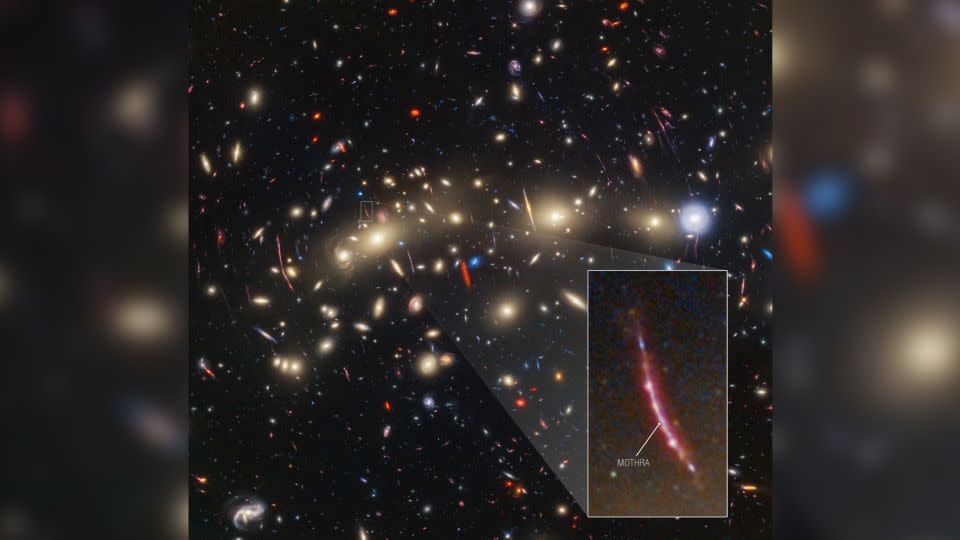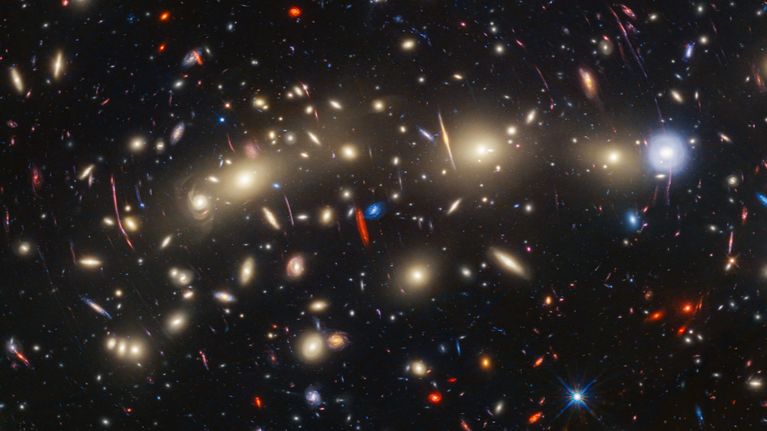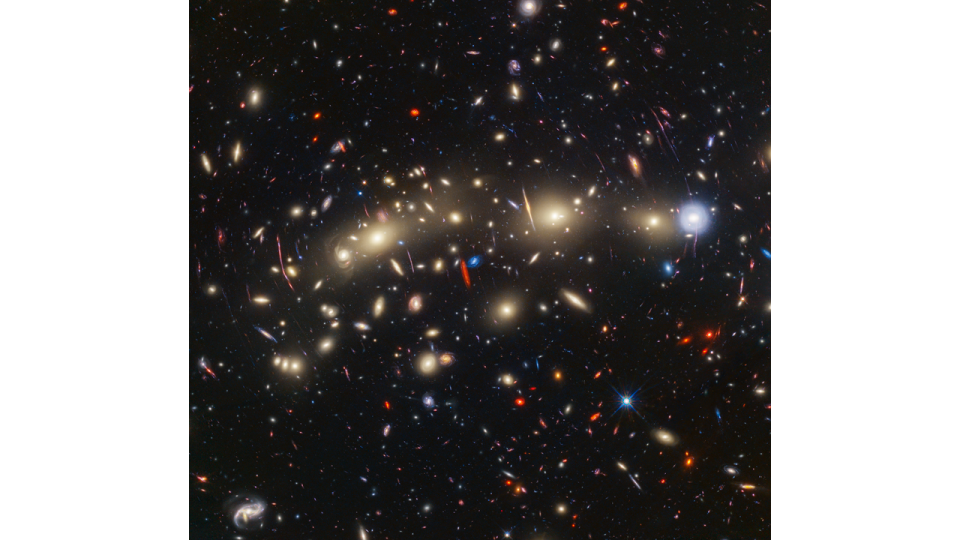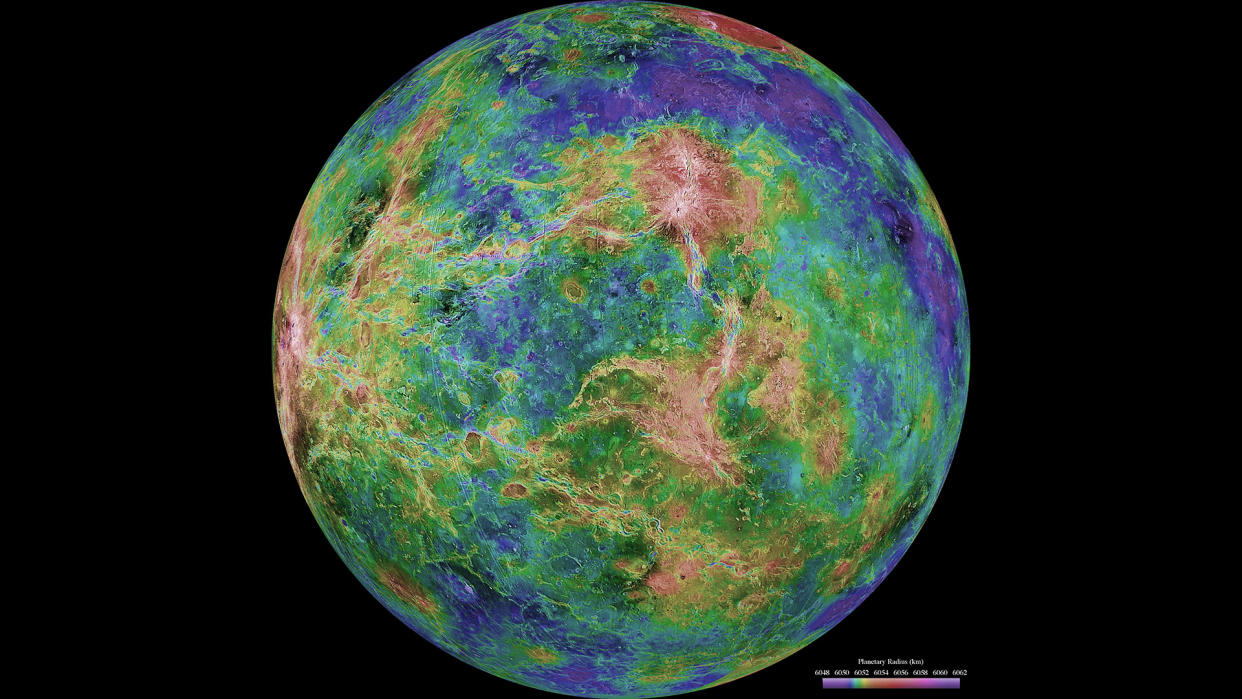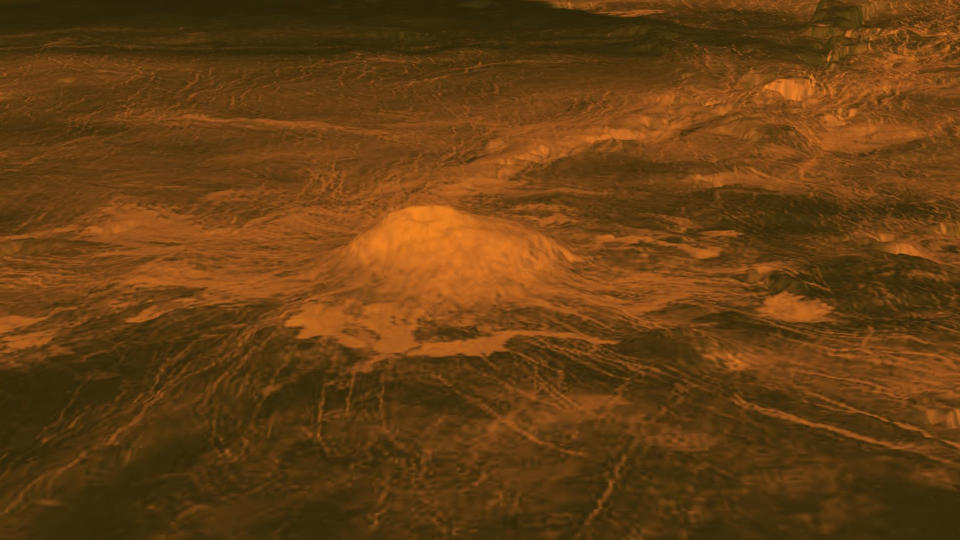Noor Al-Sibai
Sat, November 11, 2023
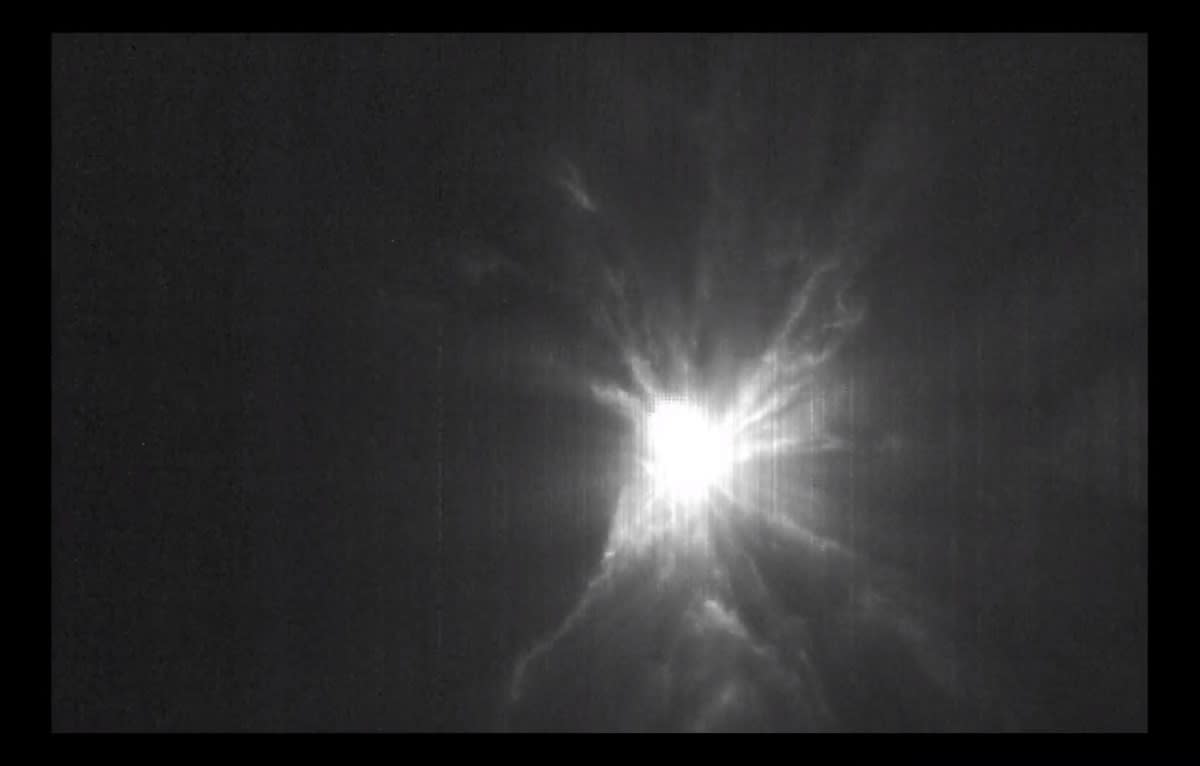
Super Smash Bros
An amateur astronomer has compiled new footage from NASA's groundbreaking asteroid-smashing mission to show just how incredible the collision really was.
As ScienceAlert reports, Barcelona-based citizen scientist Jacint Roger Perez processed the videos, which he posted on Twitter in GIF form, from newly-released raw images from the Double Asteroid Redirection Test (DART) mission that successfully deflected an asteroid called Dimorphos last September.
Alongside the NASA spaceship used to ram into Dimorphos, the Italian Space Agency sent a tiny cubesat called LICIAcube — and it was new footage from LICIAcube's two cameras that Perez used to compile his stunning views of what happened just before, during, and after the DART craft slammed into the asteroid.
https://twitter.com/landru79/status/1720528631779266852
The DART impact, ScienceAlert explains, ended up having a way larger, more visible, and longer-lasting effect than scientists were expecting.
As NASA reported last December, more than two million pounds of material ejected from the itty bitty Dimorphos asteroid, which was only 525 feet across and orbited its larger brother Didymos every 11 hours and 55 minutes.
https://twitter.com/landru79/status/1720828117038534676
Dead on Impact
After the impact, a whopping 6,214-mile tail of debris trailed the asteroid for months on end — and although scientists were looking to only alter the orbit of the "moonlet" asteroid by about seven minutes, the impact of NASA's refrigeration-sized spacecraft was diminished by a whopping 33 minutes.
Interestingly enough, multiple teams of scientists hypothesized earlier this year that Dimorphos was displaced from its orbit so significantly not just because of the DART impact, but also because of the massive debris tail the collision caused.
As ScienceAlert reported back in March, the journal Nature published a series of articles about the Dimorphos debris, with three of them finding that the asteroid's long post-smashing tail seemed to increase its momentum more than anyone could have expected.
This mission's purpose wasn't just for the love of the game, but rather to see whether we could divert any killer asteroids screaming towards Earth to avert the kind of world-shattering disaster that made dinosaurs extinct.
Obviously, it was way more successful than scientists anticipated — and it made for some pretty stunning and badass imagery of a space-age wrecking rally, just as a bonus.
More on DART: Something Weird is Going on With the Asteroid NASA Smashed
NASA probe to observe near-Earth asteroid's 2029 close encounter
Steve Gorman
Fri, November 10, 2023
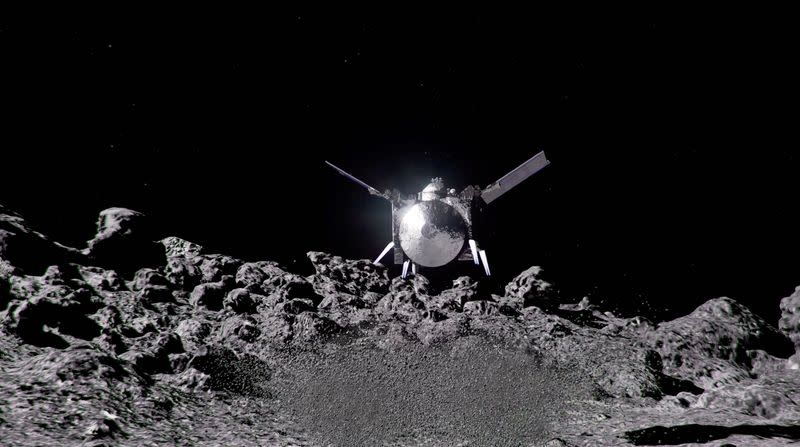
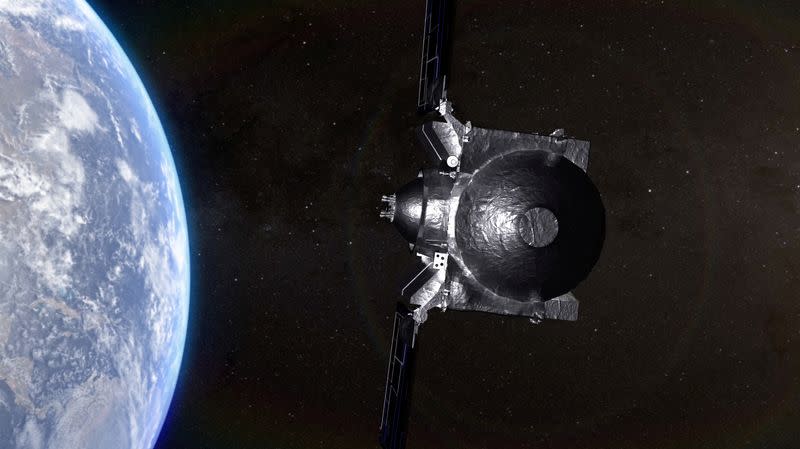
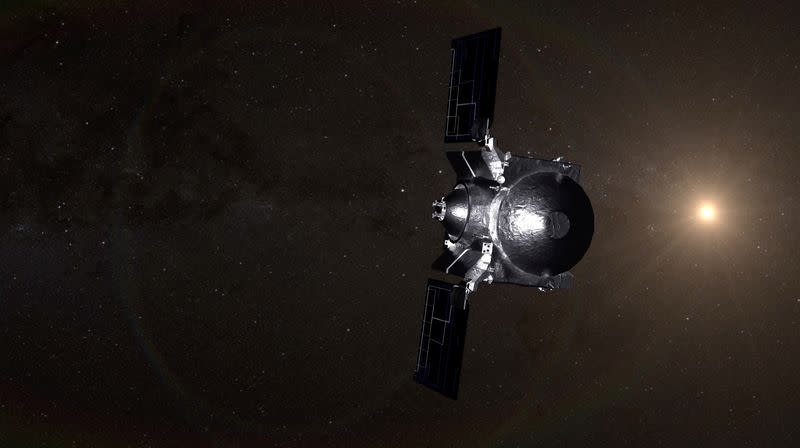

By Steve Gorman
(Reuters) - About 5-1/2 years from now, astronomers predict, an asteroid about as wide as the Empire State Building is tall will streak through space within 20,000 miles (32,200 km) of Earth, the closest any celestial object of that size will have come to our planet in modern history.
When it does, a spacecraft launched by NASA in 2016 is expected to be in position to provide a detailed examination of this rare close encounter.
The mission, directed by University of Arizona scientists, is expected to yield insights into planetary formation and knowledge that could inform efforts to build a defense system against possible doomsday asteroid collisions with Earth.
At the time of its 2004 discovery, the asteroid Apophis, named for a demon serpent embodying evil and chaos in ancient Egyptian mythology, appeared to pose a dire impact threat to Earth, with scientists forecasting a potential collision in 2029. Refined observations have since ruled out any impact risk for at least another century.
Still, its next approach in 2029 will bring the asteroid within a cosmic cat's whisker of Earth - less than one-tenth the moon's distance from us and well within the orbits of some geosynchronous Earth satellites.
The spacecraft now headed for a rendezvous with Apophis is OSIRIS-REx, which made headlines plucking a soil sample from a different asteroid three years ago and sending it back to Earth in a capsule that made a parachute landing in Utah in September.
SPACECRAFT'S SECOND ACT
Rather than retire the spacecraft, NASA has rebranded it as OSIRIS-APEX - short for APophis EXplorer - and fired its thrusters to put it on course for its next target.
The Apophis expedition was detailed in a mission overview published in the Planetary Science Journal.
Apophis, oblong and somewhat peanut-shaped, is a stony asteroid believed to consist mostly of silicate materials along with iron and nickel. Measuring about 1,110 feet (340 meters) across, it is due to pass within about 19,800 miles (31,860 km) of Earth's surface on April 13, 2029, becoming visible to the naked eye for a few hours, said Michael Nolan, deputy principal investigator for the mission at the University of Arizona.
"It's not going to be this glorious show," Nolan said, but it will appear as a point of reflected sunlight in the night sky over Africa and Europe.
An asteroid that large passing so near to Earth is estimated to occur roughly once every 7,500 years. The Apophis flyby is the first such encounter predicted in advance.
The tidal pull of Earth's gravity likely will cause measurable disturbances to the asteroid's surface and motion, changing its orbital path and rotational spin. Tidal forces could trigger landslides on Apophis and dislodge rocks and dust particles to create a comet-like tail.
The spacecraft is set to observe the asteroid's Earth flyby as it nears and ultimately catches up with Apophis. These images and data would be combined with ground-based telescope measurements to detect and quantify how Apophis was altered as it passed by Earth.
OSIRIS-APEX is scheduled to remain near Apophis for 18 months - orbiting, maneuvering around it and even hovering just over its surface, using rocket thrusters to kick up loose material and reveal what lies beneath.
PLANETARY SCIENCE AND DEFENSE
Like other asteroids, Apophis is a relic of the early solar system. Its mineralogy and chemistry are largely unchanged in more than 4.5 billion years, offering clues to the origin and development of rocky planets like Earth.
Close examination of Apophis could give planetary defense experts valuable information about the structure and other properties of asteroids. The more scientists know about the composition, density and orbital behavior of such celestial "rubble piles," the greater the chances of devising effective asteroid-deflection strategies to mitigate impact threats.
NASA deliberately crashed a spacecraft into a small asteroid last year in a planetary-defense test that nudged the rocky object from its normal path, marking the first time humankind altered the natural motion of a celestial body.
Apophis is substantially larger than that asteroid but tiny compared with the one that struck Earth 66 million years ago, wiping out the dinosaurs.
While not big enough to pose an existential threat to life on Earth, an Apophis-sized asteroid striking the planet at hypersonic speed still could devastate a major city or region, Nolan said, with ocean impact unleashing tsunamis.
"It wouldn't be globally catastrophic in the sense of mass extinctions," but an impact "would definitely come under the category of bad," Nolan said.
"This thing is coming in at many miles per second if it hits. And at that speed, it kind of doesn't whether if it's made of gravel or ice or rocks or whatever. It's just a big, heavy thing moving fast," Nolan added.
(Reporting by Steve Gorman in Los Angeles; Editing by Will Dunham)
Could scientists stop a 'planet killer' asteroid from hitting Earth?
Brandon Specktor
Sat, November 11, 2023
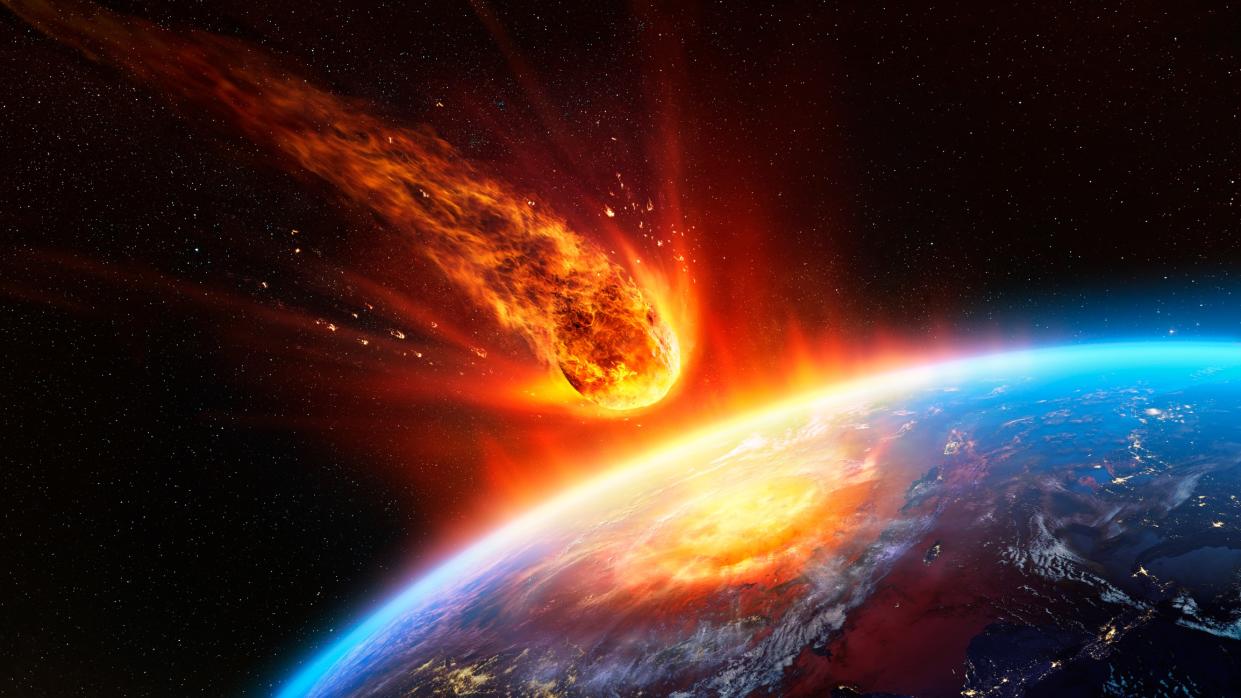
We see an enormous, fiery asteroid falling through Earth's atmosphere and very nearly hitting our blue planet.
It's a classic science fiction scenario: An enormous asteroid is discovered hurtling toward Earth that is sure to trigger a cataclysmic extinction upon impact. Intrepid scientists have only a year to launch a preemptive strike against the space rock — to knock it off course or blow it to bits — with the fate of humankind at stake. Can they stop it?
This doomsday scenario is, in all likelihood, one humans alive today will never have to face. Astronomers have mapped the trajectories of more than 33,000 asteroids that make occasional close approaches to Earth, and none pose any risk of impact for at least the next 100 years.
Still, scientists understand that disaster can descend with little warning; thousands of asteroids move hidden in the sun's glare, including many rocks large enough to obliterate entire cities, and the European Space Agency (ESA) warns that dozens of "planet killer" asteroids — those measuring wider than 0.6 mile (1 kilometer) and capable of triggering a global extinction event — still lurk undiscovered in our solar system.
For this reason, space agencies take the doomsday scenario "very seriously," Brent Barbee, an aerospace engineer at NASA's Goddard Spaceflight Center and a professor of aerospace engineering at the University of Maryland, told Live Science. And after years of research — including the world's first mission to deflect an actual asteroid in space — the international community's efforts have yielded two viable ways of changing a potentially deadly asteroid's course: hitting it with a high-speed impactor, or pummeling it with nuclear explosives.
Related: NASA's most wanted: The 5 most dangerous asteroids in the solar system
The kinetic impactor method
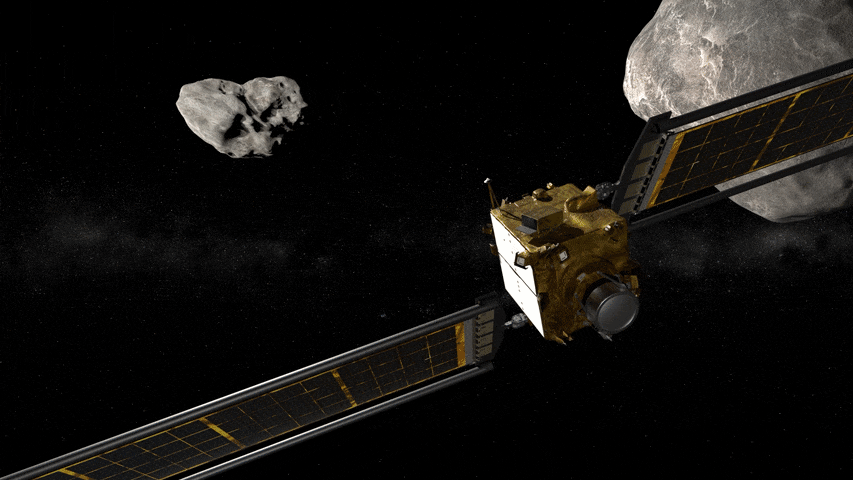
An animation visualizes DART's approach to its asteroid target.
Currently, the only proven way to deflect an asteroid is the kinetic impactor method — essentially, a very, very high-stakes game of cosmic pool.
"The kinetic impactor is a spacecraft that basically just rams into the asteroid at high speed and transfers its momentum to the asteroid, much like playing billiards," Barbee said. "But then the ejected material that comes off the asteroid from the impact point can provide additional momentum change for the asteroid and push it a little bit harder."
NASA tested the kinetic impactor method with the recent Double Asteroid Redirection Test (DART) — a $325 million mission that intentionally crashed a speeding spaceship into the 580-foot-wide (177 meters) asteroid Dimorphos in Sept. 2022.
Dimorphos posed no threat to Earth but made a prime target due to its size and orbit around a larger companion asteroid, Didymos. Following the successful impact on Sept. 26, Dimorphos' orbit around Didymos slowed by a whopping 33 minutes — a result of both the impact and the massive plume of dust ejected from the asteroid's surface. The mission — humanity's first and so far only attempt to alter the course of an asteroid — was a smashing success.
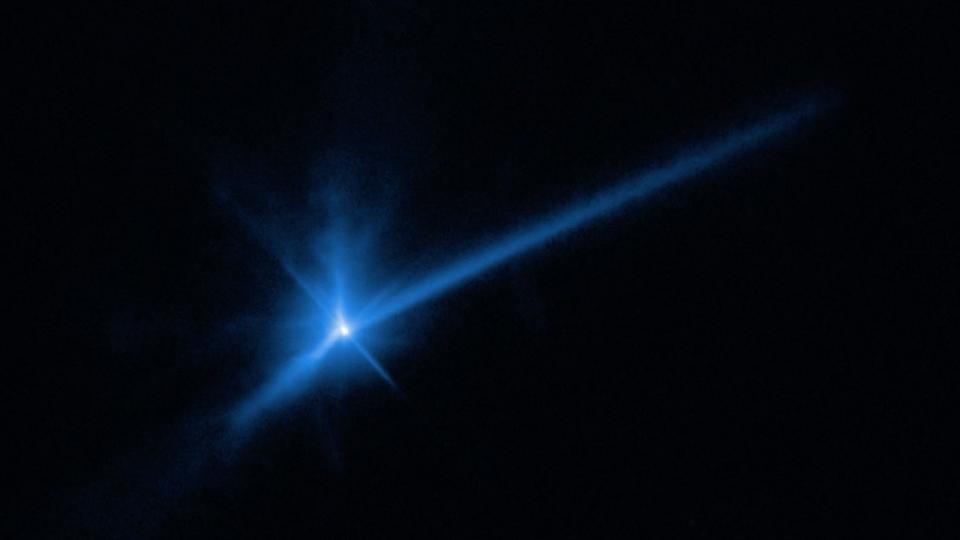
In September 2022, NASA’s DART probe smashed into the Dimorphos asteroid. The Hubble Space Telescope managed to capture an image of the giant dust plume that was generated.
However, the kinetic impactor method has its drawbacks, Barbee said. Particularly, the bigger the target asteroid is, the more kinetic impactors are required to deflect it.
For example, to deflect an asteroid measuring roughly 2,000 feet (610 m) wide — or about three times the size of Dimorphos — scientists would need to simultaneously launch between 39 and 85 Falcon Heavy rockets carrying kinetic impactors, Barbee said, citing the results of a mock asteroid deflection exercise conducted at the International Academy of Astronautics Planetary Defense Conference this year. To deflect an asteroid measuring 4,900 feet (1.5 km) wide — a true "planet killer" — we'd need to simultaneously launch anywhere from 565 to 1,266 kinetic impactors, depending on which part of Earth the asteroid was poised to strike. (A glancing blow takes less mass to deflect than a dead-center hit).
"Either way, those numbers are completely impractical," Barbee said.
The nuclear option

We see the top of a Titan II nuclear missile in its silo in Arizona
The current "best option" for deflecting a large asteroid is to launch a nuke at it, Barbee said.
"A single appropriately sized nuclear explosive device was, in our analysis, found to be capable of deflecting even the 1.5 kilometer size asteroid," he added.
Logistically, the process would begin like a routine interplanetary mission, with a nuclear weapon mounted securely atop a standard launch vehicle, then delivered to the asteroid on a small spacecraft. From there, the weapon could be detonated near the asteroid during a high-speed flyby — or, ideally, the nuke-carrying spacecraft could rendezvous with the target asteroid, orbiting it for months or even years to find the perfect angle of approach, much like NASA's OSIRIS-REx spacecraft did with asteroid Bennu from Dec. 2018 to Oct. 2020. The ideal spot for a nuclear detonation would be within a few hundred feet of the asteroid, Barbee said.
Then, the explosion — a blast that would look nothing like any nuclear bomb ever detonated on Earth.
"Space, of course, is a vacuum… so you don't get a big pressure wave, or any of the thermal effects of a terrestrial detonation," Barbee said. "You get a whole lot of radiation all at once."
This torrent of radiation would penetrate and vaporize a thin outer layer of the asteroid's surface. Then, like a kinetic impactor on steroids, the vaporized material would shoot off the asteroid, giving the rock a powerful shove away from the explosion. If positioned correctly, the explosion would knock the planet-killer off its collision course with Earth.
This method could be equally effective at disrupting smaller "city killer" asteroids, too — those measuring at least 165 feet (50 m) in diameter, which is generally considered the minimum size for an asteroid to reach Earth's surface, Barbee said. While a kinetic impact against such a rock runs the risk of fragmenting it, forming chunks of unknown sizes moving in unpredictable ways, a well-placed nuke could simply "blow the asteroid to smithereens," solving the problem at once, Barbee added.
However, for now the "nuke it" method exists only in simulations based on data from terrestrial explosions. Many factors, including the size and composition of the asteroid, and the timeframe and trajectory of its approach to Earth, would ultimately impact such a mission's success.
Timing is everything
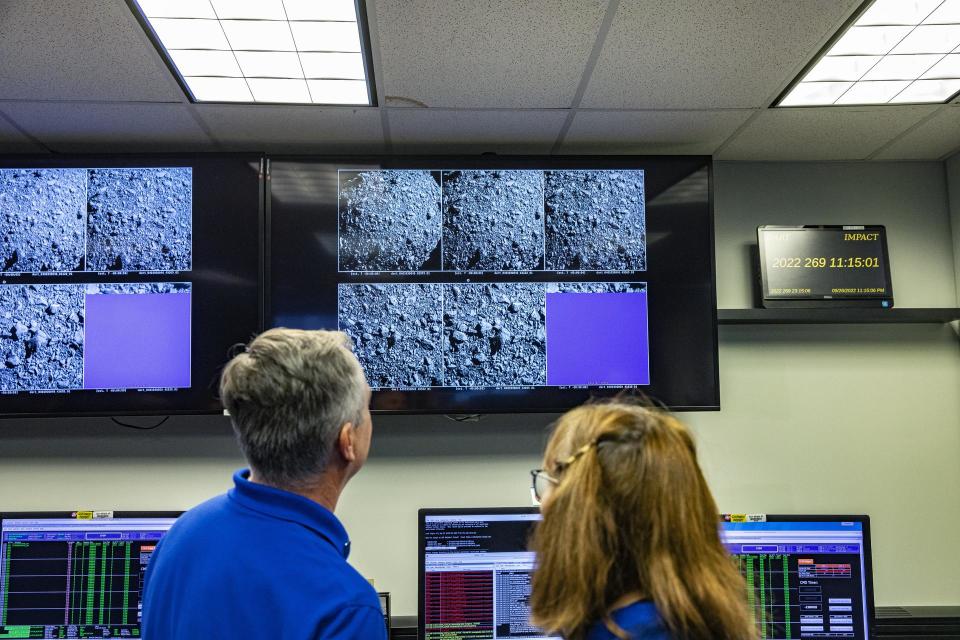
Two NASA researchers watch a wall of screens showing the rocky surface of the asteroid Dimorphos, moments before the DART spacecraft smashes into it
The biggest challenge with both methods is timing. In their Planetary Defense Conference exercises, astronomers were given 15 years' warning before the hypothetical asteroid's impact with Earth. This gave them ample time to plan, launch and rendezvous a spacecraft with the asteroid.
If a real planet-killer was discovered just a year or two before impact, things would get dicey.
"The typical interplanetary mission development timeline is about five years," Barbee said. "The way things stand right now, getting something off the ground in a year would be very difficult. I don't want to say outright that it would be impossible, but it would certainly be a big challenge."
That's why the best planetary defense is detecting asteroids early — charting them, monitoring them, and developing a contingency plan of attack. Many ground-based observatories are already on the case, with several space-based missions — including NASA's NEO Surveyor and ESA's NEOMIR satellites — in the works to join them. Hopefully, together, these eyes on the skies will keep scientists well informed about any killers lurking in the cosmic fog.
"Asteroid impacts are one of the few natural disasters that we actually have the means to both foresee and prevent," Barbee said. "And so we're taking advantage of that fact and trying to become as prepared as possible."

